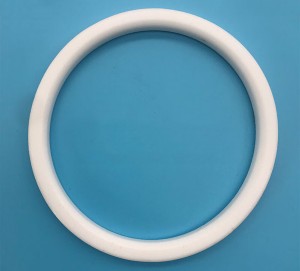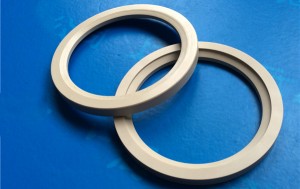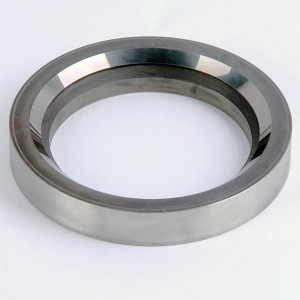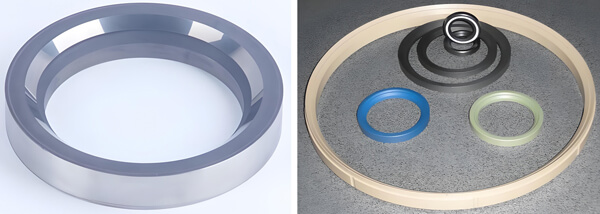Ball Valve Seat Guide: Functions, Materials (PTFE Seat & More) & Temperature Ranges | Ultimate Seal
In the world of ball valves, effective sealing is paramount. At the heart of this critical function lies a key component: the Ball Valve Seat, often simply called the Valve Seat. This unsung hero is the true “sealing champion” of the Ball Valve assembly.
What Exactly is a Ball Valve Seat
The Ball Valve Seat is the crucial sealing element within a ball valve structure. Typically crafted from metal or non-metallic materials, it’s installed inside the valve body. Its primary role is to form a tight sealing interface with the rotating ball. By maintaining this intimate contact, the Valve Seat enables the valve to reliably shut off or regulate fluid flow.
The Valve Seat’s Triple Threat: More Than Just a Seal
Modern Ball Valve Seats possess impressive capabilities beyond basic sealing:
1. Adaptive Sealing (The Shape-Shifter): Like a memory foam pillow conforming to your head, a high-quality Valve Seat maintains elasticity across extreme temperature ranges (referencing ASTM D1710 standards, typically -196°C to +260°C). This elasticity allows it to automatically compensate for minor wear on the ball surface, ensuring long-term sealing integrity.
2. Fluid Director (The Preventer): Specially engineered designs, like V-port Ball Valve Seats, actively guide the flowing medium. This directed flow helps scour the sealing surfaces, preventing the build-up of debris or particulate matter that could compromise the seal.
3. Emergency Responder (The Fire Safety): Certain Valve Seat designs incorporate fire-safe features. In the event of extreme heat (like a fire), these seats are engineered to char or carbonize. This carbonized layer then forms a secondary, emergency metal-to-metal seal, preventing catastrophic failure.
The Science of Sealing: How the Valve Seat Works
Sealing occurs through direct physical compression. When the ball rotates into the closed position, it presses firmly against the Ball Valve Seat. This pressure deforms the seat material slightly, creating a leak-tight barrier against the medium. Standard ball valves utilize two Valve Seats – one on the inlet and one on the outlet side. In the closed state, these seats effectively “hug” the ball, capable of withstanding pressures up to 16MPa (per API 6D standards). Enhanced designs, such as V-port seats, can further improve sealing through controlled shear forces acting on the media.
Ball Valve Seat Temperature Ranges: Material Matters
The operational temperature limits of a Ball Valve Seat are fundamentally dictated by its material composition. Here’s a breakdown of common seat materials and their critical temperature ranges:
Soft Seal Ball Valve Seats (Polymer & Elastomer Based):
• PTFE Seat (Polytetrafluoroethylene): The classic choice. PTFE Seats excel in corrosion resistance and operate reliably between -25°C to +150°C. For demanding applications requiring frequent cycling, precision-machined PTFE Seats (achieving ±0.01mm tolerances) paired with specially finished balls can deliver over 100,000 cycles with zero leakage – meeting the stringent ISO 5208 Class VI seal standard.

• PCTFE (Polychlorotrifluoroethylene): Ideal for cryogenic services. Operates effectively from -196°C to +100°C.
• RPTFE (Reinforced PTFE): Enhanced for durability and higher temperatures. Suitable range: -25°C to +195°C, excellent for high-cycle applications.
• PPL (Polyphenylene): A strong performer for steam. Use within -25°C to +180°C.
• Viton® (FKM Fluoroelastomer): Renowned for chemical resistance and broad temperature capability (-18°C to +150°C). Use cautiously with steam/water.
• Silicone (VMQ): Offers exceptional high-temperature reach and chemical inertness (-100°C to +300°C), often requiring post-curing for optimal strength.
• Buna-N (Nitrile Rubber – NBR): A versatile, economical option for water, oils, and fuels (-18°C to +100°C). Good abrasion resistance.
• EPDM (Ethylene Propylene Diene Monomer): Excellent for ozone resistance, weathering, and HVAC applications (-28°C to +120°C). Avoid hydrocarbons.
• MOC / MOG (Carbon-Filled PTFE Composites): Offer enhanced stability and wear resistance. MOC/MOG ranges typically -15°C to +195°C.
• MOM (Modified Carbon-Filled PTFE): Optimized for wear, range -15°C to +150°C.
• PA6 / PA66 (Nylon): Good for pressure and wear (-25°C to +65°C).
• POM (Acetal): High strength and stiffness (-45°C to +110°C).
• PEEK (Polyetheretherketone): Premium high-performance polymer. Exceptional temperature (-50°C to +260°C), pressure, wear, and chemical resistance. Highly resistant to hydrolysis (hot water/steam).

Hard Seal Ball Valve Seats (Metal & Alloy Based):

• Stainless Steel + Tungsten Carbide: Robust solution for high temperatures (-40°C to +450°C).
• Hard Alloy (e.g., Stellite) + Ni55/Ni60: Superior wear and extreme temperature resistance (-40°C to +540°C).
• High-Temperature Alloy (e.g., Inconel, Hastelloy) + STL: Engineered for the most severe services (-40°C to +800°C).
Critical Consideration: The materials listed above represent common options. Actual Ball Valve Seat selection must be based on the specific operating conditions (temperature, pressure, medium, cycle frequency, etc.) of each application. Numerous other specialized materials exist to meet unique requirements beyond just temperature. Always consult valve manufacturers for precise material recommendations tailored to your system. The right Valve Seat is fundamental to ball valve performance and longevity.
Post time: Jul-14-2025







